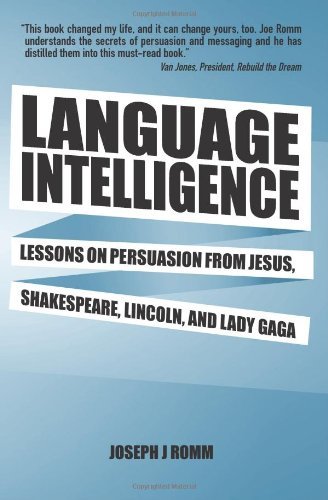UPDATE (May 15, 2017): It seems that this article resonated with the fans of Lady Gaga, who is currently on her JOANNE tour. Click here to learn more about the tour, their sustainability efforts of the tour and the ground-breaking work of Lady Gaga to advocate for greater love, understanding, acceptance and inclusivity.
UPDATE (May 15, 2017): It seems that this article resonated with the fans of Lady Gaga, who is currently on her JOANNE tour. Click here to learn more about the tour, their sustainability efforts of the tour and the ground-breaking work of Lady Gaga to advocate for greater love, understanding, acceptance and inclusivity.
Anyone who is aware of the magnitude of the threats posed by pollution, resource abuse and climate change understands that serious, immediate action is required to avert catastrophe. Joseph Romm is a physicist, climate expert and writer for the excellent environmental blog Climate Progress. He has published books about energy security, greenhouse gas emissions and renewable power. His latest book, Language Intelligence, seeks to answer the question of how – with science and morality on its side – the environmental movement has been so ineffective at convincing people and governments to act on reducing carbon emissions. It is a field guide for identifying the persuasive poisons in the public discourse and for navigating the verbal environment.
Language Intelligence puts forth a well-documented but mostly forgotten truth: that human beings are more likely to be convinced by narratives, told through metaphor and other figures of speech, than by hard facts. According to Romm, the mastery of rhetorical strategies has allowed climate deniers to effectively block action in the face of overwhelming scientific consensus. The deniers and polluters know the subversive, seductive power of rhetoric to spread doubt and suspicion.
The book’s argument rests on two concepts. First, it explains how history’s greatest orators were schooled in rhetoric and the art of persuasion. The classic Greek philosophers documented this, and rhetoric has been an essential tool for artists from Shakespeare to Bob Dylan, and for politicians from Abraham Lincoln to Winston Churchill. Climate-change deniers, Lady Gaga and the Bush Administration have also used it aggressively and effectively. Second, Language Intelligence shows the science behind the history. Giving people straight facts is not enough. You have to tell them a story and make it stick.
The book is a rough introduction to how repetition, irony and extended metaphor can make crucial information compelling. Romm was inspired to write it because he saw scientists, writers, activists and regular people who were either being deceived by misinformation campaigns or failing to deliver convincing messages. The hope is that if people recognize when rhetoric is being used to deceive, they will learn to use more persuasive language themselves.
For example, salespeople tell us “you don’t need to decide now.” This is apophasis, whereby the negative words do not stick in our minds and appear to reject a point while actually emphasizing it. Together with indirect suggestion, Romm explains how this technique was used before the Iraq war to convince the American public that Saddam Hussein represented an imminent threat to their security.
In another example, studies have found that people who have a false claim pointed out to them may identify it as true 30 minutes after hearing it. In climate change discourse, where deniers endlessly disseminate false claims with strategies from Frank Luntz’s “Straight Talk” memo, the solution is not to identify lies, but instead craft a new, more powerful narrative. Positive information is more effective for countering false claims than a straight denial.
Emissions cause global warming as surely as cigarettes cause cancer, but disinformation has triumphed due to the failure of scientists to communicate metaphorically. After Hurricane Sandy, the media regularly repeated the fact that no extreme weather event can be directly linked to carbon emissions. In Romm’s favourite example, scientists used the metaphor that CO2 in the atmosphere is like steroids in a baseball hitter. To extend the narrative that Sandy is a single home run and there are going to be lots more of them is accurate and more effective than a lengthy scientific explanation.
No environmentally conscious person can afford to ignore Language Intelligence. It rebukes the cynical notion that inaction is the result of apathy, and it holds an optimistic promise for those willing to harness the power of rhetoric. If they take the author’s advice and continue to study and practice rhetoric, they may discover a renewed confidence in humanity’s chances of building a safer, cleaner, fairer world.
Language Intelligence, Joseph Romm, North Charleston: CreateSpace, 2012, 230 pages.
Reviewer Information
Nicholas Cole has a Political Science degree from Queen’s University and he is interested in renewable energy, urban sustainability and resource development. He currently lives in Seoul, South Korea.













